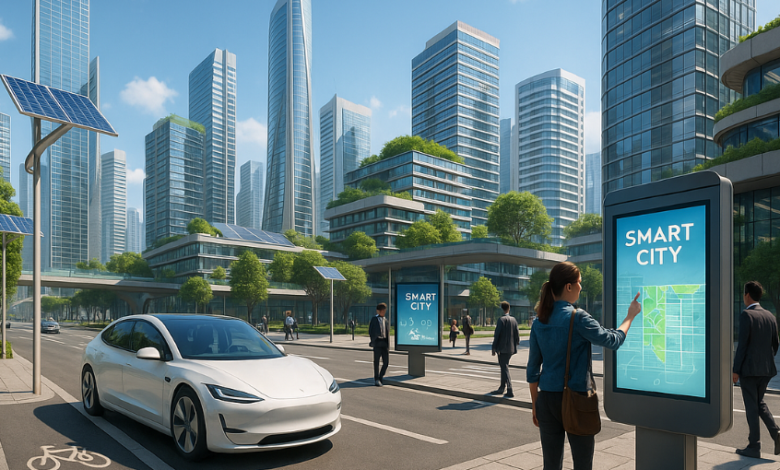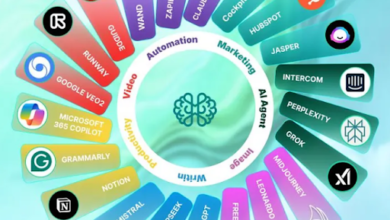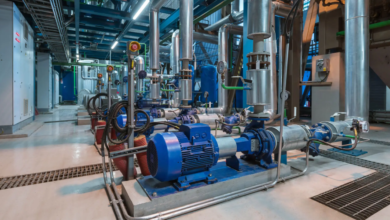How Digital Innovation is Reshaping Urban Living Standards in 2025

Technology has completely transformed how we experience home. What used to be simple shelter has evolved into intelligent living spaces that adapt to our needs, preferences, and lifestyles. Walk into any modern apartment today and you’ll find systems that would’ve seemed impossible just five years ago.
If you’re curious about developments leading this smart living revolution, Singapore’s Pinery Residences showcases how contemporary technology integrates seamlessly into residential spaces, creating homes that genuinely enhance daily life rather than just adding complexity.
My neighbor recently moved from a traditional apartment into a smart-enabled building. The change wasn’t subtle – his entire lifestyle improved. Energy costs dropped dramatically, security became effortless, and daily routines that used to require thought now happen automatically. This isn’t future speculation anymore. This is how people are living right now.
The Technology That Changed Everything
Smart home features used to be novelties that impressed guests for about five minutes before becoming annoying. Voice-activated everything, refrigerators with touchscreens nobody asked for, light bulbs requiring engineering degrees to set up. Early adoption was more hassle than help.
But something shifted. Technology matured. Systems became reliable. The focus moved from “what can we connect to the internet” to “what actually makes life better.” That change made all the difference.
Climate control systems now learn your patterns without programming. They know when you’re home, when you’re asleep, what temperature you prefer in different conditions. They optimize automatically, reducing energy consumption by 25-30% while keeping you more comfortable than manual systems ever did. That’s not convenience – that’s genuine improvement.
Security evolved beyond basic alarms. Modern systems integrate smart locks, video doorbells, cameras you can check from anywhere, automated alerts for unusual activity. But more importantly, they work reliably. No false alarms every time a cat walks by. No complicated interfaces requiring tech support to disarm. Just solid, dependable protection that gives real peace of mind.
Energy monitoring changed how people think about consumption. Most folks have zero clue what actually uses power in their homes. Smart systems break it down appliance by appliance. You discover that an old air conditioner costs more monthly than replacing it would. Or that devices in standby mode waste hundreds in electricity annually. Information leads to better decisions, which lead to lower bills.
See also: Rejuvenate Your Skin With Advanced Techniques
Gaming Culture’s Unexpected Influence
Gaming communities accidentally pioneered mainstream smart home adoption without really intending to. Gamers needed sophisticated setups – multiple screens, programmable lighting, voice control for multitasking, automated environmental adjustments for comfort during long sessions. They built elaborate systems for gaming that turned out to work brilliantly for everything else.
Streaming further accelerated this. Content creators needed professional-quality home studios with automated lighting, sound management, climate control, and equipment coordination. The technology they demanded for content creation became desirable for regular living spaces.
Voice assistants are perfect examples. Gamers normalized talking to devices years before mainstream adoption. They needed hands-free control while playing. That usage proved the technology, refined the interfaces, and made everyone else comfortable with the concept. Now voice control manages entire homes, but gamers tested it first.
RGB lighting systems started as gaming aesthetics – custom colors for personal style or matching gameplay. Those same systems now provide smart lighting throughout homes, adjusting for time of day, activities, moods. The gaming community essentially beta-tested home automation for everyone else.
Network infrastructure tells the same story. Gamers demanded rock-solid internet, minimal latency, maximum bandwidth. They built home networks that could handle anything. Those networks now support entire smart home ecosystems – dozens of devices all connecting simultaneously without issues.
Why Developers Can’t Ignore This Anymore
Real estate developers initially treated smart features as premium options for luxury properties. That calculation changed fast. What was optional became expected. What justified premium pricing became a baseline requirement.
Younger buyers simply won’t consider properties without smart capabilities. It’s not about impressing them with technology – they grew up with smartphones and expect their homes to be equally intelligent. For them, a non-smart apartment feels as outdated as one without internet connectivity.
Economics work too. Properties with integrated smart systems rent faster, command higher prices, and attract better tenants. The premium isn’t even that substantial anymore – maybe 5-10% over comparable traditional units. But that advantage in competitive markets makes an enormous difference.
Operating costs matter on the developer side. Smart building management dramatically reduces expenses. Predictive maintenance catches problems before they become expensive failures. Energy optimization throughout buildings cuts utility costs significantly. Automated security requires less human monitoring. These savings accumulate over decades.
International Examples Leading the Way
Different markets are adopting smart technology at different speeds based on infrastructure, regulations, and consumer expectations. Singapore stands out for systematic integration supported by government policies encouraging smart building standards.
What makes Singapore’s approach valuable to study is focus on practical implementation rather than flashy demonstrations. Features that genuinely improve daily living get prioritized over gimmicks that sound impressive but frustrate in actual use.
Pinery Residences along Upper Bukit Timah Road demonstrates this philosophy effectively. The development sits in an established location with proven infrastructure – not gambling on emerging areas. It enhances solid fundamentals with smart systems residents actually use rather than ignore.
Climate control that measurably reduces costs. Security that feels protective without being intrusive. Building management responded proactively rather than waiting for complaints. These aren’t revolutionary features individually, but together they create living experiences noticeably better than traditional alternatives.
The lesson is restraint. Not every possible tech feature, but careful selection of systems that enhance livability measurably. Technology serving residents rather than existing for marketing purposes. That distinction separates genuinely smart buildings from those just using “smart” as buzzwords.
Location strategy matters equally. Established neighborhoods with mature infrastructure plus modern technology creates value neither element alone achieves. Lower risk than betting on unproven areas while still offering contemporary living standards.
Reality vs Marketing Promises
Massive gaps often exist between features developers emphasize and what residents actually value daily. Marketing departments love impressive-sounding amenities that photograph beautifully. Residents care about reliability and genuine usefulness.
Basics matter most. Internet handling multiple streaming devices simultaneously. Power backup actually functions during outages. Water pressure stays consistent. Not glamorous, but absolutely essential. Properties that nail basics while adding thoughtful smart features succeed. Those with impressive marketing but unreliable fundamentals fail.
My colleague’s experience illustrates this perfectly. He toured a supposedly cutting-edge smart apartment with amazing demonstrations. Every system integrated, every feature automated, every surface touch-controlled. He signed the lease excited about future living.
Reality disappointed. Smart systems crashed regularly requiring reboots. The voice assistant couldn’t understand basic commands. Automated blinds jammed frequently. The impressive technology became daily frustration rather than convenience. Simple reliability would’ve been infinitely better than complex unreliability.
Space efficiency often gets overlooked in favor of flashy features. But in urban environments where square footage costs premium prices, maximizing usable space matters enormously. Smart storage solutions, layouts that don’t waste corners, kitchens designed for actual cooking – these affect satisfaction more than fancy lobbies.
Mobile Apps as Command Centers
Smartphone applications became central nervous systems for smart homes. Quality apps genuinely improve convenience. Poor apps add frustration.
Good building management apps consolidate everything – amenity reservations, maintenance requests, visitor management, package notifications, community updates. One interface instead of multiple systems or phone calls to management. Significant time savings that compound daily.
Better apps provide useful information beyond just control. Real-time energy consumption tracking helps identify waste. Facility availability prevents wasted trips to occupied amenities. Maintenance schedules allow planning around disruptions. This transparency builds trust and enables informed decisions.
App reliability determines whether technology helps or hinders. Applications that crash frequently or have confusing interfaces become obstacles. Developers with resources maintaining quality apps have major advantages over those treating apps as afterthoughts.
Security Considerations That Matter
Connected homes create security concerns that can’t be ignored. Every internet-connected device represents potential vulnerability. These aren’t theoretical – actual risks requiring serious attention.
Reputable developers build security into foundations rather than adding it afterwards. Encrypted device connections, regular security updates, secure authentication, comprehensive data protections. Technical details that don’t excite showroom tours but matter enormously for long-term safety.
Residents need security awareness too. Strong unique passwords for each system. Prompt updates when available. Caution integrating third-party devices. Smart homes require active participation in security, not passive assumptions.
Industry security standards are improving as best practices emerge from experience. Early implementations had concerns about vulnerabilities that made headlines. Current systems from established providers are substantially more secure, though vigilance remains necessary.
Emerging Trends Worth Watching
Technology evolution accelerates constantly. Several trends appear positioned to become standard within just years.
Artificial intelligence will become far more sophisticated. Systems genuinely learn preferences and adapt automatically. Predictive maintenance scheduling repairs before failures. Voice assistants understand context and handling complexity reliably instead of current limitations.
Energy systems will advance dramatically. Battery storage is becoming standard for storing solar power. Vehicle-to-home technology using electric cars as backup power. Micro-grid communities sharing resources efficiently between buildings.
Health monitoring integration is emerging rapidly. Air quality sensors improve environments automatically. Sleep optimization through intelligent climate and lighting. Wellness features supporting comprehensive health through environmental management.
Making Smart Decisions
Focus on features adding measurable value rather than impressive-sounding hype. Not all smart features deliver equivalent returns.
Prioritize systems reducing ongoing costs – energy management, water efficiency, climate optimization. These pay for themselves through lower bills. Financial sense beyond just convenience.
Security features providing genuine peace of mind justify premium pricing. Reliable doorbells, locks, cameras from established brands offer real value.
Check whether features can be updated as technology evolves. Systems allowing upgrades without major renovations maintain value better than proprietary solutions becoming obsolete quickly.
Consider developer track records specifically with technology. Established developers with proven implementations are safer bets than those chasing trends without experience.
Where This All Leads
Smart home technology completed its transformation from expensive novelty to expected necessity. The question shifted from whether to embrace these features to which implementations actually add value.
The best smart homes feel effortlessly comfortable rather than obviously high-tech. Technology works invisibly in the background, improving life without demanding attention. That separates thoughtful implementation from feature-cramming for marketing purposes.
Getting comfortable with smart living now positions you well for residential real estate’s future, where intelligent capabilities will be as standard as electricity and running water are today.





